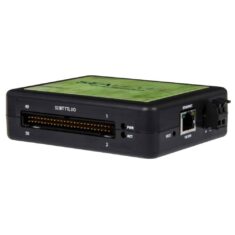I/O Interfaces for Harsh Environments
Drones and robotic vehicles typically require a number of I/O (input-output) interfaces in order to communicate with sensors, payloads and other devices that act on or react to the outside world.
Many UAVs (unmanned aerial vehicles), UGVs (unmanned ground vehicles), USVs (uncrewed surface vessels) and other unmanned systems, especially those used in military applications, operate in highly challenging environments and thus need some level of ruggedization for their I/O interfaces.
Input / Output Modules
Rugged I/O interfaces may be integrated into the vehicle’s hardware, or may be added in the form of expansion modules. They may be required for a wide variety of data and signals, including CAN, Ethernet, USB, analog and power. In addition to ruggedization, they may also be engineered to conform to strict SwaP-C (size, weight, power and cost) parameters. Form factors may include OpenVPX and XMC.
Shock & Vibration Resistance
I/O interfaces on drones and robotic vehicles may have to be engineered to withstand high levels of shock and vibration, caused by factors such as heavy UAV landings, crossing rough terrain, or proximity to engines. Electronic PCB (printed circuit board) components can be held in place via potting adhesives. Locking connectors can also be used to ensure that connections are not shaken loose by shock and vibration.
ESD Protection & Isolation
Ruggedization of I/O modules may also include protection against ESD (electrostatic discharge). Electronics may also need to be isolated in order to protect against ground loops, electronic interference and other unwanted signals.
Sealing & Industry Standards
Input / output interfaces may need to be sealed against dust and moisture. They may be designed to ingress protection standards such as IP65 or IP67. They may also need to be able to withstand exposure to chemicals such as oil and aviation fuels.
Safety-critical I/O electronics such as those used in UAV avionics may need to be designed to specific standards such as DO-254.






















